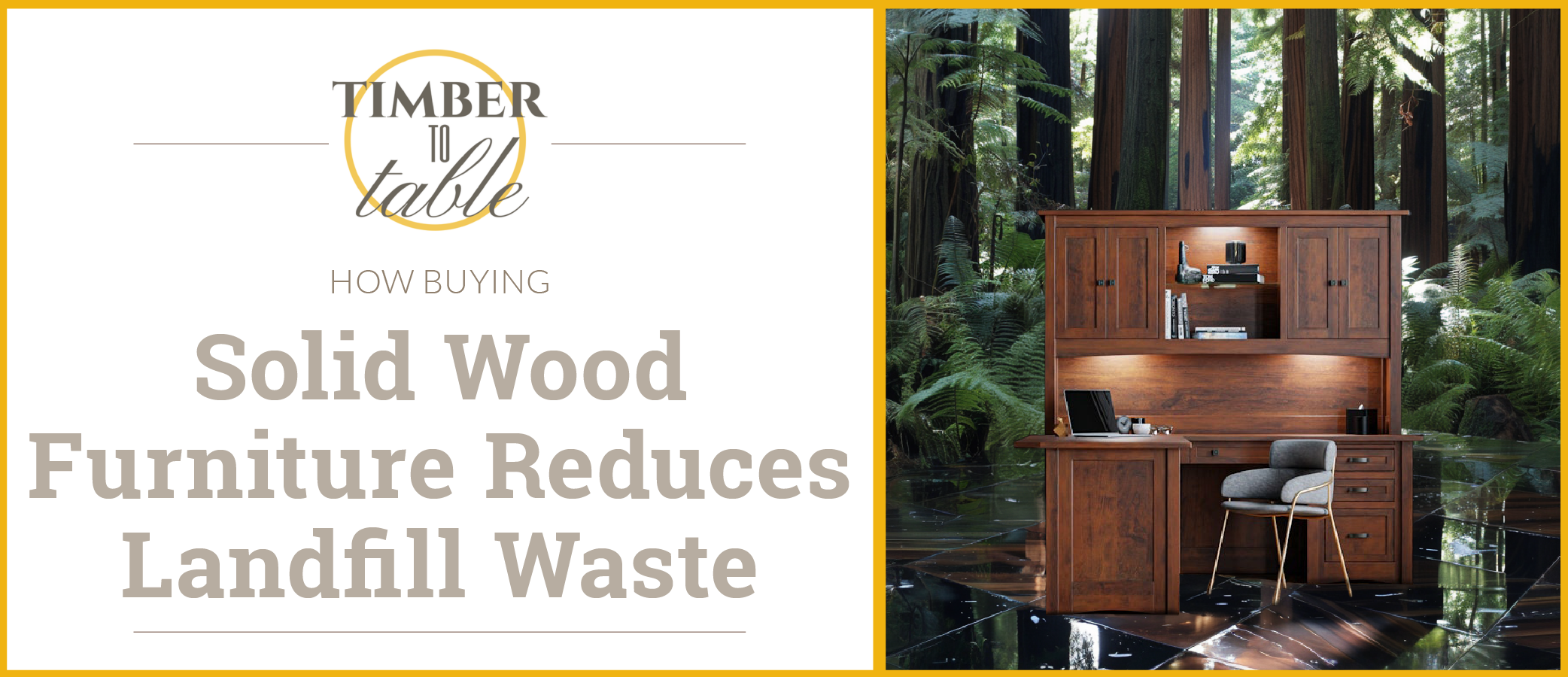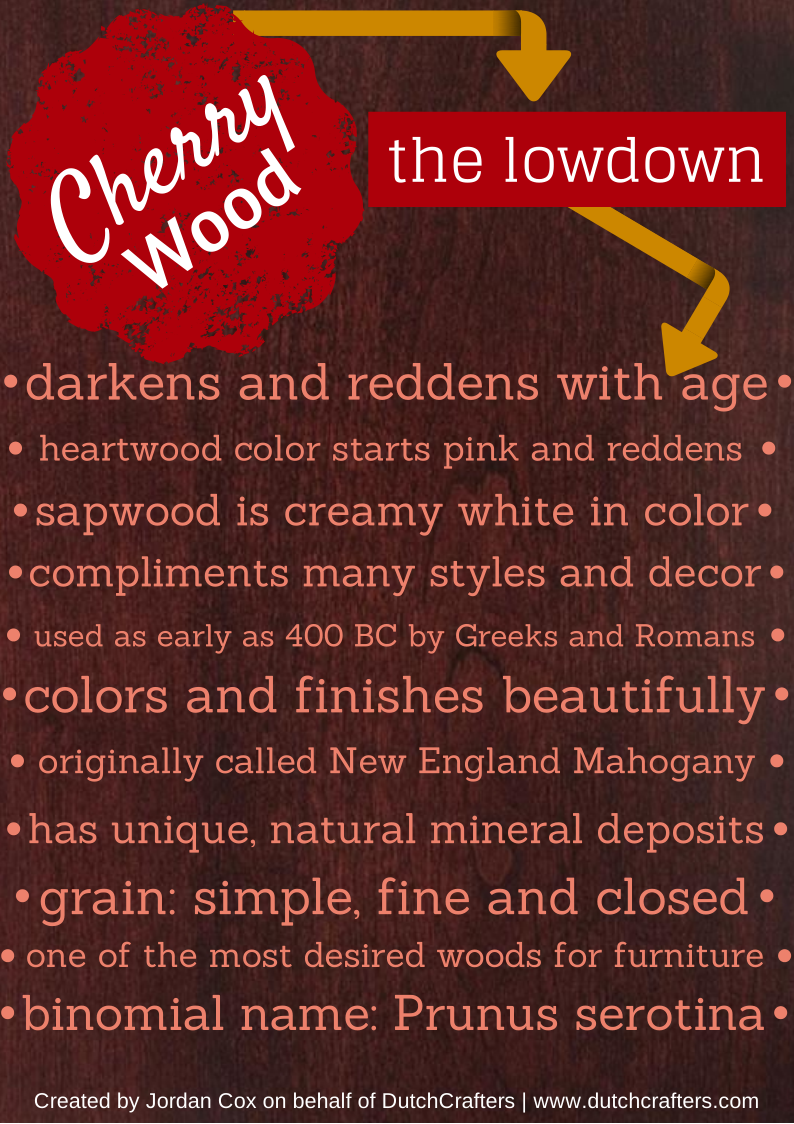
How Buying Solid Wood Furniture Reduces Landfill Waste
Fast Furniture is Quickly Filling Our Landfills
In 1960, we “only” threw away 2.1 million tons of furniture in the landfill each year. Nowadays, we surpass 12 million tons annually, and furniture disposal is becoming an environmental crisis.
What is Fast Furniture?
Fast furniture is toxic, cheaply-made furniture that is not fit to survive a move and is destined for a landfill near you. As its popularity has soared due to its low price, so has the amount of furniture ending up in our landfills each year.
We explain the risks and dangers associated with the fast furniture industry and how you can be a part of the solution.
Table of Contents
- How Much Furniture Gets Thrown Away Each Year?
- The Rise of Fast Furniture in Homes and Landfills
- What is Particle Board Furniture
- Expert Opinion: Fast Furniture is Not Made to be Moved
- Can Particle Board Furniture Cause Cancer?
- Environmental Impact of Fast Furniture
- How Solid Wood Furniture is a Sustainable Solution
How Much Furniture Gets Thrown Away Each Year?
Over 12 million tons of furniture are deposited into our landfills each year.
That’s right! Over 12 million tons of furniture are piled into our landfills each year. Multiple sources have placed the blame squarely on the heads of the cheap, “fast” furniture industry.
This garbage (or soon-to-be garbage) is cheaply made and designed to last only a short time. If damaged, it costs more to repair than it’s worth. As a result, cheap furniture rarely gets donated and usually ends up in the dumpster.
The Rise of Fast Furniture in Homes and Landfills
The drastic increase in furniture dumping is directly related to the fast furniture movement. Massive retailers such as Amazon, Ikea, Walmart, and others offer cheap pressboard furniture to the masses.
With the rise of the fast furniture industry, we have also seen a drastic and potentially catastrophic rise in the amount of furniture dumped in our landfills each year.
See Below: EPA’s Data on furniture and furnishings tonnage sent to landfills each year.
- 1960: 2.1 million tons
- 1970: 2.8 million tons
- 1980: 4.7 million tons
- 1990: 6.8 million tons
- 2000: 8.1 million tons
- 2010: 10.8 million tons
- 2015-Present: 12 million+ tons per year.
What is Particle Board Furniture?
Particle board furniture consists of pressed wood chips and fibers held together with a resin made of formaldehyde and other toxic chemicals. MDF and particle board can be so toxic that it is recommended that you do not cut or break them in your home.
Fast Furniture is “Not Made to be Moved”
Elite Moving and Storage recommends you dispose of your pressboard fast furniture when you move because it is simply “not made to be moved.”
Cheap furniture is becoming increasingly popular, and professional moving companies advise throwing it away when you move. It’s easy to see why “fast furniture” is quickly piling up in our landfills!
Can Particle Board Furniture Cause Cancer?
Here is what the EPA says about particle board and formaldehyde:
“It has also been shown to cause cancer in animals and may cause cancer in humans.”
The dangerous chemicals in MDF and particle board furniture are carcinogenic and may cause certain types of cancer.
Environmental Impact of Cheap Furniture
1. Fast Furniture Irresponsibly Sources Materials
While our Amish builders like to source their lumber from local and responsible sources, mass manufacturers have much lower standards. They harm ecosystems worldwide by making ridiculously cheap furniture that breaks easily and gets thrown away.
2. Fast Furniture is Mass Manufactured and Exploits Cheap Labor
If you can order a couch online for a fraction of the price of an actual couch, you need to ask yourself where and how that couch was manufactured. Not only do many of these facilities exploit cheap labor, but they can have toxic manufacturing processes. Many third-world countries exploit child labor, have cramped workspaces, and the workers suffer from hazardous exposure to toxins used in the manufacturing of fast furniture.
3. It Breaks Easily and Gets Thrown Away
The furniture ends up in landfills and takes up lots of space. The cycle starts over again when you buy more. STOP THE CYCLE
4. Fast Furniture is Toxic
Fast furniture is so toxic you can’t burn it or cut it in your house, and yet we are loading our landfills with this cheap, toxic furniture.
How Solid Wood Furniture is a Sustainable Solution
Our solid wood furniture is crafted in small Amish-owned woodshops in Indiana, Ohio, and Pennsylvania. Additionally, our outdoor poly furniture is made chiefly of recycled milk jugs and plastic.
When we say our furniture is heirloom quality, it means more than just legacy and memories passed down through your lineage. This also has a significant impact on our environment. Not only does it look better, but it lasts for generations.
This is the opposite of the fast furniture movement, which basically means “furniture that goes fast to the landfill.”
DutchCrafters has planted 25,000 trees and counting!
In addition to using locally grown, sustainably sourced lumber, DutchCrafters plants a tree with every order! On Earth Day 2021, we partnered with American Forests to plant a tree with every DutchCrafters order placed. Together, we have planted tens of thousands of trees!
We wouldn’t have it any other way, as sustainability is one of our core values at DutchCrafters!
3 Things You Can Do to Keep Fast Furniture Out of Landfills
1. Buy Handcrafted Solid Wood Furniture
The next time your fast furniture falls apart, stop contributing to the problem and become part of the solution by purchasing a made-to-order solid-wood heirloom piece.
2. Buy Used Solid-Wood Furniture Instead of Cheap Fast Furniture
You can always buy used solid-wood furniture from a thrift store or yard sale if you aren’t in the market for brand-new furniture. Don’t encourage the “fast furniture” industry anymore! Used furniture is a much better alternative to fast furniture that is destined for a landfill near you.
3. Donate Your Old Furniture
In researching this post, I found that the most popular searches regarding furniture and landfills were people searching for places to dump their old furniture. There are plenty of places willing to take your old stuff. It’s worth a shot before you take it to the dump.
Benefits of Donating Your Used Furniture
- You are doing your part by keeping your old furniture out of our landfills!
- You are providing an affordable furniture option to someone who needs it.
- The person who needs the affordable option doesn’t have to buy fast furniture.
- You can get a tax deduction for your donation as opposed to paying the landfill so you can add to the mountain of trash.
More Resources on Fast Furniture vs. Slow Furniture
- 5 Ways to Participate in the Slow Furniture Movement
- Origins of the Slow Furniture Movement
- Sustainable Furniture: More Than Just a Design Trend
Summary
- We’ve gone from 2.1 million tons of furniture in landfills in 1960 to over 12 million tons annually.
- Fast furniture uses exploitative labor practices to offer dirt-cheap furniture.
- Experts advise throwing fast furniture away rather than trying to move it.
- Fast furniture can be toxic and may even cause cancer, according to the EPA.
- Purchasing solid wood furniture designed to last for generations greatly reduces the amount of furniture we put in landfills each year.
- Purchasing from DutchCrafters supports small businesses in America’s heartland rather than the giant fast furniture manufacturers who exploit cheap overseas labor.
- Buy used solid-wood furniture if you aren’t in the market for brand-new, made-to-order pieces.
- Donate your old furniture!
- Do business with businesses that put sustainability efforts into action.
Seth Carter has been with DutchCrafters since 2020. Seth has won multiple awards for his work in Amish furniture while with DutchCrafters. He has advised and partnered with more than 150 Amish wood shops on furniture presentation, design, industry trends, product options, and the development of exclusive products. He is originally from Indiana and even lived in Amish country (LaGrange, Indiana) for an extended period of time while working with DutchCrafters. Seth was previously in charge of DutchCrafters' Amish bedroom furniture category. He was eventually promoted to lead the team that managed every product in DutchCrafters' world's largest online collection of Amish furniture.





